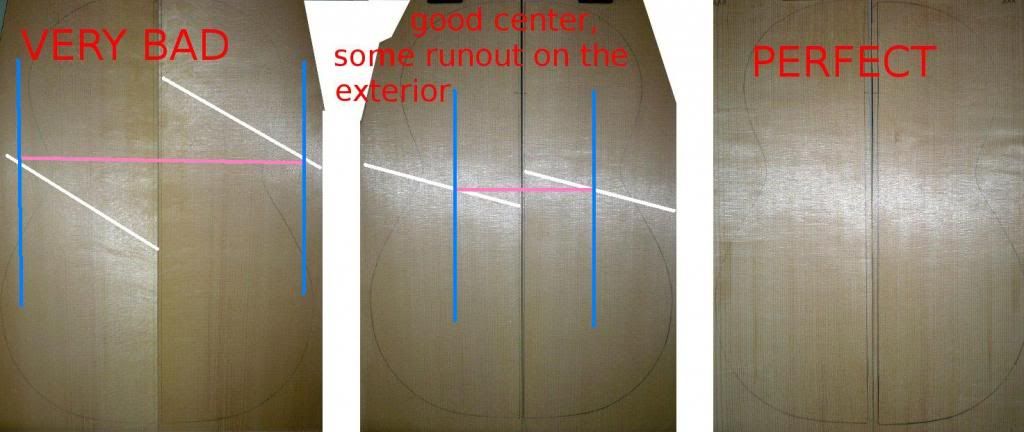In my experience, the best lighting for detecting runout in a rough sawn top is a long fluorescent tube, oriented perpendicular to the grain direction. Hold both halves of the top in the same plane, and view the reflection off the fluorescent light. You should see a narrow band across the wood. If the band is continuous across both halves, there is no runout at the joint. If the bands are offset, you will have visible runout.
Another thing to note is that if the bands are not straight across but angled, that indicates a tree with spiral growth. In that case, there will only be one line across the width of each half that has no runout. This line will always be at the point where the reflected band is at the same level in both halves of the top.
This photo illustrates the effect. The white lines are highlighting the reflected bands. The pink line is straight across, midway between the two bands. The blue lines are at the intersections, and show where the top has zero runout. Note that the runout is in opposite directions on either side of this blue line. The top on the left was from a tree with excessive spiral. If possible, it would be better to join the other edge, since it has less runout. The middle top has less spiral, and much less runout at the joint. The right-hand top was cut from a tree with minimal spiral, and that top has very little runout.

The top on the left is an indication that the wood was cut from long logs, rather than from split billets. In that case, runout will be the worst along the bark edge, which is usually the most desirable to join. If that wood had been cut into short blocks and split, there is the opportunity to saw parallel to the split along the bark edge. That means there will be no visible runout at the joint. Not only is that better visually, but it makes the top stronger in the bridge area. IMHO, runout placed on the outer edges of a top has very little or no negative impact.

![Thumbs Up [:Y:]](./images/smilies/smiley20.gif) Yeah you are very right, Miguel.
Yeah you are very right, Miguel.